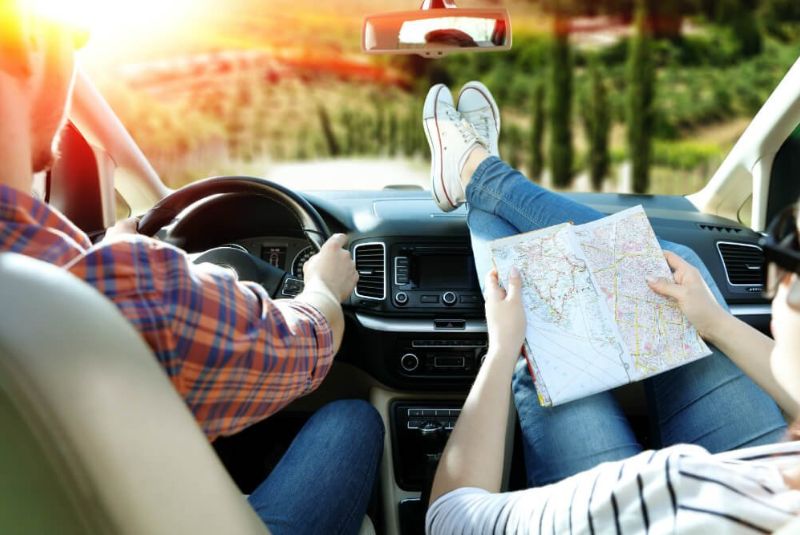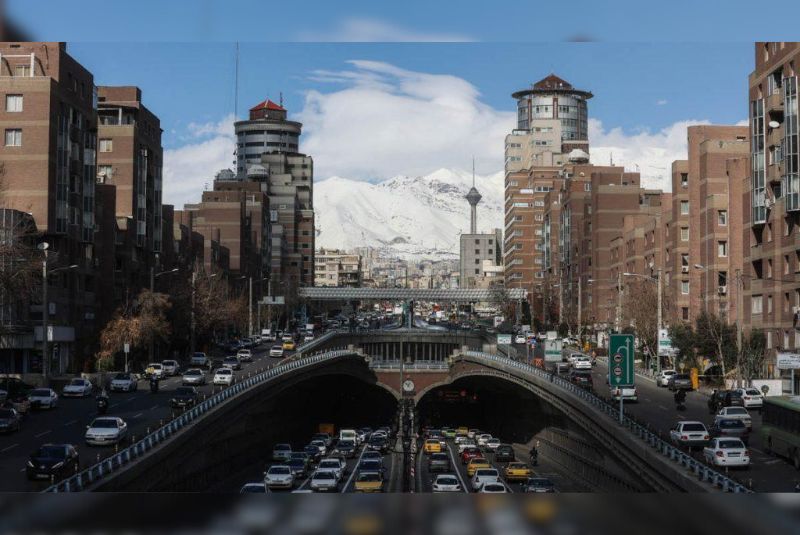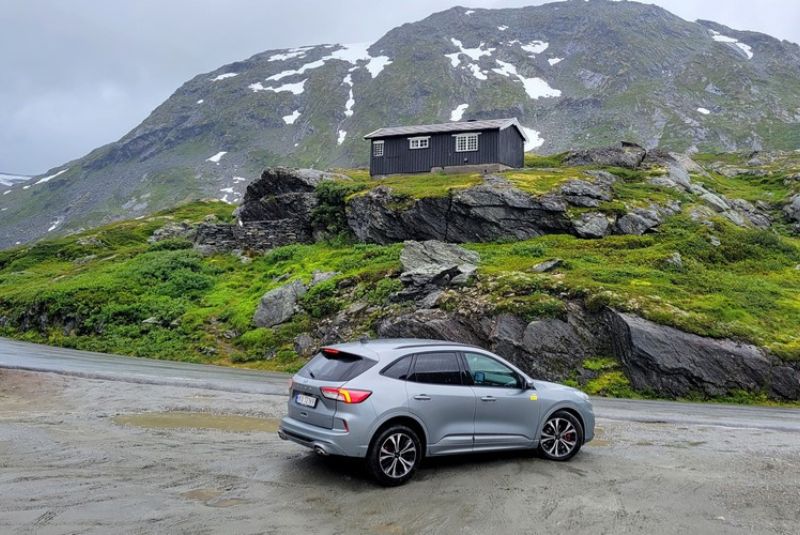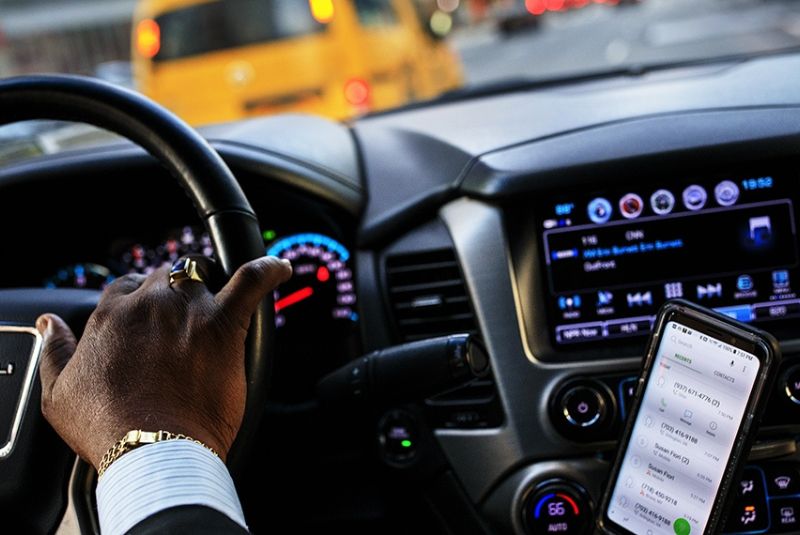Driving and Car Rental in Iran: What You Need to Know
Iran is increasingly popular among backpackers, and for good reason—it's beauty and rich culture deserve more recognition. Although the traffic in Iran can be chaotic and unpredictable, driving in Iran can make travel much easier, especially for long distances.
Renting a car offers the freedom to explore off-the-beaten-path destinations that most tourists miss. While Iran's public transport is well-organized, a rental car allows you to discover the country's hidden gems.
Whether you're considering renting a standard car or a supercar, this guide will help you understand the essentials of car rental and driving in Iran. Read on to learn valuable insights into what to watch out for and what you need to know before diving into Iran's unique driving landscape.
Car Rental for Tourists in Iran

Why Rent a Car in Iran?
Car rental in Iran offers unparalleled freedom and flexibility. You can create your own itinerary, stop at scenic spots, and visit off-the-beaten-path locations that public transportation might not reach. This autonomy allows for a more immersive and personalized travel experience.
Car Rental Companies
There are several car rental companies in Iran, though the number of providers is not as large as in some other countries. One recommended company is Saadat Rent, known for its reasonable prices and the option to rent cars without a driver. For instance, you can rent a Peugeot 206 for approximately 33 euros per day. It's important to note that some rental companies only offer cars with drivers, which might limit your sense of freedom.
Price List and Options
Renting a car in Iran can be quite affordable. Here's a general idea of the costs:
- Local Cars: Models like Dena, Samand, or older Peugeot 206: 18-30 euros per day.
- Luxury Cars: Brands such as Toyota, BMW, Kia, Mercedes, Hyundai, and Porsche: 80-300 euros per day.
Additional equipment like travel tables, baby seats, chains, and bikes are also available for a small rental fee.
Car Rental Requirements
To rent a car in Iran, you need to meet the following requirements:
- Age: Minimum age is typically 18, though some agencies require you to be 21.
- Driving License: An international driving license is preferred. If you don't have one, your home country’s license is valid for up to six months, ideally accompanied by a translation.
- Deposit: A deposit and insurance fee are required, usually ranging from 300 to 5000 euros, depending on the car and rental terms.
How to Book a Car in Iran
You can book your rental car online or at the Imam Khomeini International Airport. The booking process typically involves:
- Choosing Your Vehicle: Select a car based on your needs and budget. Iranian cars like Peugeot 206 are economical, while luxury models like BMW or Mercedes are also available.
- Providing Documentation: You need a valid driving license (international or translated local license), passport, and visa.
- Making a Deposit: A deposit ranging from 300 to 5000 euros is usually required. This is refunded when you return the car, minus any fines or damages.
Payment
Due to international sanctions, foreign credit cards are generally not accepted in Iran. However, you can use a tourist card like MahCard, which you can obtain at airports upon arrival. This card helps manage your payments securely and conveniently.
Pickup and Drop-off
Most car rental companies have offices in major cities like Tehran, Isfahan, Shiraz, and Yazd, as well as airports. You can arrange to pick up and drop off your car at these locations. Keep in mind that dropping off the car at a different location than the pickup point might incur additional fees.
Duration and Mileage
Rental periods can range from a few hours to a week for short-term rentals. Long-term rentals, spanning from 28 days to a year, come with benefits such as car swaps, maintenance, and insurance services. Unlike in many countries, Iran typically does not impose mileage limitations on rental cars, allowing you to explore extensively.
Driving in Iran

Traffic in Iran
Driving in Iran can be quite an adventure due to its unique traffic conditions. Here’s what you need to know about driving in Iran:
City Traffic
City traffic, especially in Tehran, Isfahan, and Shiraz, can be chaotic and unpredictable. Drivers often disregard lane markings, traffic signals, and conventional rules. It’s common to see cars reversing in unexpected places and parked vehicles in the middle of the road. Patience and alertness are crucial.
Highway Driving
Once you leave the cities, driving becomes more manageable. Highways have a speed limit of 110 km/h, enforced by numerous speed cameras and occasional police checks. It's advisable to go with the flow of traffic to avoid fines.
Toll Roads
Many highways in Iran are toll roads. Keep some change handy for toll booths, where fees typically range from 5,000 to 20,000 rials.
Road Conditions
Iran’s highways are generally well-maintained. However, rural and secondary roads can be less reliable, with potential potholes and rough patches.
Speed Bumps
In villages and smaller towns, speed bumps are common and often poorly marked. Pay attention to these as they can vary in size and height.
Refueling
Gas is extremely cheap in Iran, around 0.05 euros per liter. Most gas stations have attendants who will refuel your car, but occasionally you might need to do it yourself. Be cautious, as the nozzles may not have automatic shut-off sensors.
Iran's Driving Etiquette

Here are some driving etiquettes you should consider if you are a tourist planning to drive in Iran:
Headlights
It's customary to keep headlights off during the day and only turn them on after dark, which is about one hour after sunset. Many drivers use their high beams constantly, even in the city, so be prepared for potential glare.
Speed Limits
Speed limits can be inconsistent. You might see changes from 80 to 110 to 70 km/h within short distances. Follow the general flow of traffic for safety.
Navigating and Communicating
Road signs in Iran are bilingual, displaying both Farsi and English. GPS navigation tools and apps like Google Maps work well, but having a physical map as a backup can be useful. Iranians are generally helpful and hospitable; locals will often offer directions, food, and even accommodation.
Safety Considerations When Driving in Iran

General Safety
Iran is generally safe for travelers, and the hospitality of Iranians is well-known. However, always exercise common sense and caution, particularly in busy urban areas.
Driving After Dark
Driving after dark can be more challenging due to the high beam usage and occasional poorly lit roads. It’s advisable to limit night driving, especially outside of major cities.
Insurance
Ensure that your rental includes comprehensive insurance coverage. This will protect you in case of accidents or damage.
Multi-Country Travel and Border Crossing

Iran shares borders with several countries, offering opportunities for multi-country road trips:
- Azerbaijan and Nakhchivan: To the northwest.
- Armenia: To the northwest.
- Turkey: To the west.
- Iraq: To the west.
- Pakistan: To the southeast.
- Afghanistan: To the east.
- Turkmenistan: To the northeast.
Border Crossing Tips
- Visas: Ensure you have the necessary visas for each country you plan to visit. Onward visas can be obtained in Tehran.
- Documentation: Carry your passport, visa, and driving license. Some borders may require additional permits.
- Local Regulations: Familiarize yourself with the driving rules and regulations of neighboring countries.
Tips for Renting a Car in Iran

- Book in Advance: Reserve your car online to ensure availability and get the best rates.
- Choose the Right Car: Opt for an economy car for city travel or a 4x4 for rural areas.
- Check Documentation: Have an international driving permit or a translated local license.
- Understand Costs: Be aware of rental fees, deposits, and additional charges.
- Inspect the Car: Check for existing damages and ensure they’re documented.
- Fuel Policy: Follow the full-to-full policy; refuel before returning the car.
- Insurance: Consider additional coverage beyond the basic insurance.
- Payment Method: Use cash or a tourist card, as international credit cards are not accepted.
- Know Traffic Rules: Follow speed limits, wear seat belts, and avoid using mobile phones.
- Plan Routes: Use GPS or maps for navigation; Google Maps works well.
- Emergency Contacts: Keep rental company and emergency service numbers handy.
- Cultural Awareness: Respect local customs and dress codes, especially in rural areas.
Bottom Line
Renting a car in Iran offers a unique and flexible way to explore the country’s diverse landscapes and cultural treasures. While driving can be challenging, especially in cities, the rewards far outweigh the difficulties.
By following this comprehensive guide, you’ll be well-prepared for an unforgettable road trip through Iran. From navigating city traffic to discovering remote destinations, your journey will be filled with memorable experiences and warm encounters with the local people. So, pack your bags, book your rental car, and embark on an adventure through the enchanting land of Iran.
Share your story!
Comment below and let us know about your Experience.
Your story inspires others!


Comment
Leave a Comment